Michael Gambon had a mechanical bent. When not acting, he absorbed himself in making things, specialising in replicas of antique guns. He was a dedicated maker, and good at it. Some of his creations were so convincing, he told interviewer Mel Gussow, that they were bought by dealers who sold them as genuine to other collectors. “Really, I’m a faker,” he said. “It’s pulling the wool over one’s eyes.”
Craft and complicity, the act of making something that feels more than real – it is tempting to find an image here of the actor’s art. Audiences embrace authenticity in the faker’s craft, and Gambon brought heft and delicacy, mischief and pooling emotion to roles from Shakespeare, Chekhov, Brecht and Beckett to Pinter, Churchill and Ayckbourn.
Some of the stories Gambon told may not be exactly true. An incorrigible prankster on stage, he was an inveterate fibber, especially when a reporter’s ears were flapping. Did he actually affront Laurence Olivier in his Old Vic audition by doing one of the star’s famous speeches from Richard III and then slicing his hand open on a pillar? Maybe. Did he fire a water pistol at his fellow actors? Seems so. Did he really lose his temper at an underpopulated matinee of Uncle Vanya, after spotting a front-row punter unashamedly working on an oil painting of co-star Greta Scacchi? And did he then hoist up a samovar brimming with water, lumber to the front of the stage and hurl it at him, drenching both painter and canvas? We can but hope.
In any case, these stories fit the actor’s myth. True or not, these tales are Gambonesque, artist and saboteur. Let’s print the legend.
After seeing one of Gambon’s landmark performances, as Eddie Carbone in Arthur Miller’s A View from the Bridge (1987), Richard Eyre reflected: “He’s a genius, more capable of giving and receiving love on stage than any other actor.” Nicholas Hytner, who directed Gambon as Falstaff, described his effect as always seeming in closeup, no matter how far away from him you sat. He may have protected himself in public, yet in performance he let his heart and soul crack open.
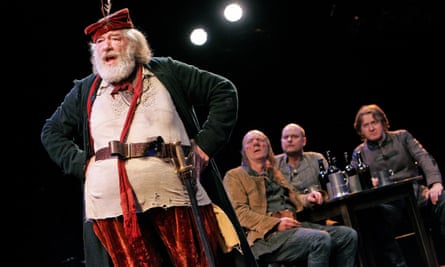
What made Gambon so special on stage? For a start, a really interesting body, and the will to transform it. Staunch chest, long limbs, big hands that drew attention. When he howled against the storm as Lear (1982), or heaved a kitchen table at the wall as Carbone, you flinched. Violence coursed through him, even in comedy: as the end-of-tether am-dram director in Ayckbourn’s A Chorus of Disapproval (1985), he raged at his amateur cast. (“I wish to God they were professionals. Then I could sack them.”)
But twined around the storm was a softness. You could hear it in that unmistakable voice, furred with mischief over a mahogany core. That softness was in the body, too – the strong shoulders could sag, the bunched fists drop helplessly to his side. Lear wandered out of his wits; Eddie slumped as his neat certainties fell away. Gambon had a face that, as he aged, was made to crumple, his eyes brimmingly sad.
Gambon could play the everyday blues, perhaps because he came late to stardom. He started as an apprentice engineer and amateur actor before getting his break as a walk-on at Olivier’s Old Vic. His classical contemporaries – Ian McKellen, Derek Jacobi, Alan Howard – made their mark early: nervy young men staking a claim on Hamlet. Gambon was 40, long past the age of juvenile leads, when Brecht’s Galileo sealed his reputation at the National Theatre in 1980. Howard Brenton, who adapted the play, sensed the unleashed “powerhouse behind this diffident man of great wit”.
Even when playing leads at the National, he complained that the organisation considered him “sweaty and smelly and working-class.” He’d never been cast for pretty cheekbones or youthful bounce – and carried a sense of displacement and impostordom into his mature roles. His Uncle Vanya (1988) howled at the life passing him by. His accidental hero in Ayckbourn’s Man of the Moment (1990) pottered around a Costa del Crime villa, marvelling innocently at the ill-gotten bling: “Isn’t it simply glorious?”
Even his swaggerers contained sorrows, rarely as bullish as they appeared. His tycoon, sleekly confronting a former lover in David Hare’s Skylight (1995), was like a lost baby deep inside, red-faced and baffled by someone he couldn’t command. He wore a good suit, did Gambon. Bespoke threads bespeak assurance, but the man within told a different story. In Caryl Churchill’s A Number (2002), his character, Salter, cloned a supposedly dead child – but the child didn’t die and his now adult son (Daniel Craig) wasn’t the sole clone. “They were meant to make one of you,” Gambon grumbled, his complicity unravelling. As Churchill’s play needled at what makes us unique, the self Gambon presented fractured, as loss and guilt overwhelmed him.
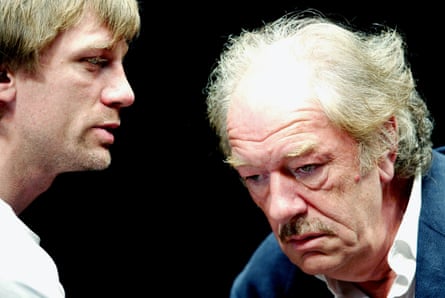
Gambon did more films as he grew older – “whispering in the daytime”, he said, compared with theatre’s “shouting at night”. But though he could tread heavy, there was also an unexpected delicacy. “You’ve got the heart of a dancer,” said the choreographer Kenneth MacMillan, who wanted him to play Friar Laurence in the Royal Ballet’s Romeo and Juliet, but died before it could come to pass. (Other tantalising might-have-beens include a mooted Henry V and Coriolanus – how would this disarming bear have tackled Shakespeare’s martial heroes?)
Gambon gave some of his best to Ayckbourn and Pinter – cricket-loving twin poles of late-century British drama. One seized on his back-foot everydayness, the other on his front-footed threat. He considered the slowpoke vet in The Norman Conquests (1975) closest to his real self – kindly (though possibly just indecisive), too bashful to make moves on Felicity Kendal, barely completing a sentence during the nine-hour trilogy.
Pinter’s language is never artless, and Gambon embodied several of his determined speakers. Longtime lover in the 1978 premiere of Betrayal; cunning, wounded vagrant in The Caretaker (2000), unnervingly extending his great paws; callous sergeant in Mountain Language (he performed the early-evening short play at the National Theatre before crossing the river to go on in Uncle Vanya). He wasn’t well enough to join the starry London festival of Pinter’s short plays in 2018, but was at least heard in Mountain Language, now as a disembodied voice of tyranny.
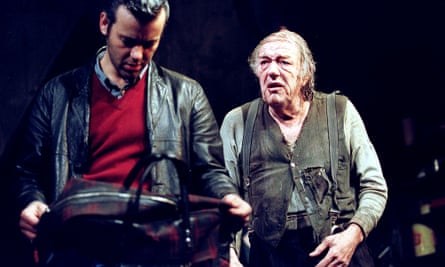
In performance, Gambon was a quixotic creature. He was a notorious giggler and a cause of giggling in others. Wisdom among punters was that it was best to catch him early in a stage run, before boredom set in. He rattled through a late performance of Volpone as if itching to leave the stage. But the magic moments were heart-stoppers: gusts and eddies of emotion arriving out of nowhere.
Tears erupted mid-speech in Skylight; in both Uncle Vanya and Tales from Hollywood, he suddenly collapsed, felled like a tree in a lightning storm. Gambon carried a pebble in his pocket throughout his performances of Lear, he told Gussow, because its solid touch grounded him. Vocally and physically he was a magnified presence – yet somehow, in tales of grief and fury and sheer bewilderment at life’s cruel games, he made that presence feel life-sized.
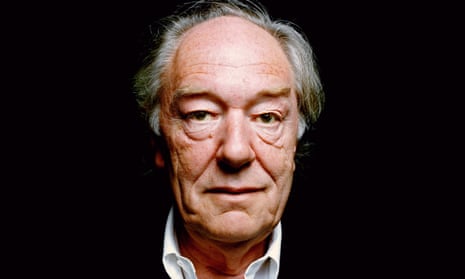
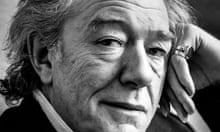
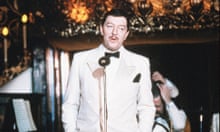
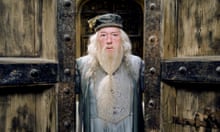
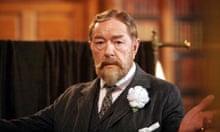
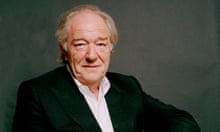

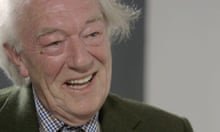
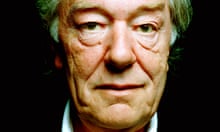
Comments (…)
Sign in or create your Guardian account to join the discussion